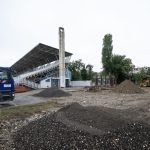The decision to finance the project was signed by Regional Policy Commissioner Corina Cretu and Regional Development Minister Gabrijela Žalac
The European Union is set to financially participate in the construction of the Pelješac Bridge with 85 percent of the total value of the project, Tportal reported on June 7, 2017.
“This Commission is literally building bridges. This project is an example of our dedication to removing obstacles, connecting state areas and bringing people closer together. I know how long citizens of Croatia have been waiting for this bridge and I am glad we will use EU funds to participate in this new chapter in the history of this country,” said Commissioner Corina Cretu.
The project “Road connection with south Dalmatia” encompasses the construction of a new bridge over the Adriatic in Mali Ston Bay. It will connect Dubrovnik-Neretva County and the rest of the land. This will ease the unhindered flow of goods and people, especially during the height of the tourism season. Total value of the project is 536 million euros with VAT, and without VAT, the amount is 420 million euros, of which 85 percent is being funded by the EU.
The Pelješac Bridge will be 55 metres high and 2.4 kilometres long, with four traffic lanes. The EU is also financing the construction of supporting infrastructure such as access roads, including tunnels, bridges and viaducts, and the bypass of Ston town, 8 kilometres in length, as well as works on the improvement of the existing road, D414. Works are expected to be completed during 2022.
The Commission cited that the bridge will cut travel between Dubrovnik and Split by more than 50%, with the unhindered connection significantly benefiting tourism and strengthening the territorial cohesion of south Dalmatia and the rest of the country.
The feasibility study, prepared by Croatia, analysed possible options to connect the two parts of the country, and the most desirable option came in the form of a bridge. Other options included a corridor through Bosnia and Herzegovina, a ferry line and tunnel construction.
Before the Commission approved it, independent experts thoroughly tested the feasibility and the cost effectiveness of the project. The Commission noted that the project was prepared in cooperation with intitutions in Bosnia and Herzegovina.








